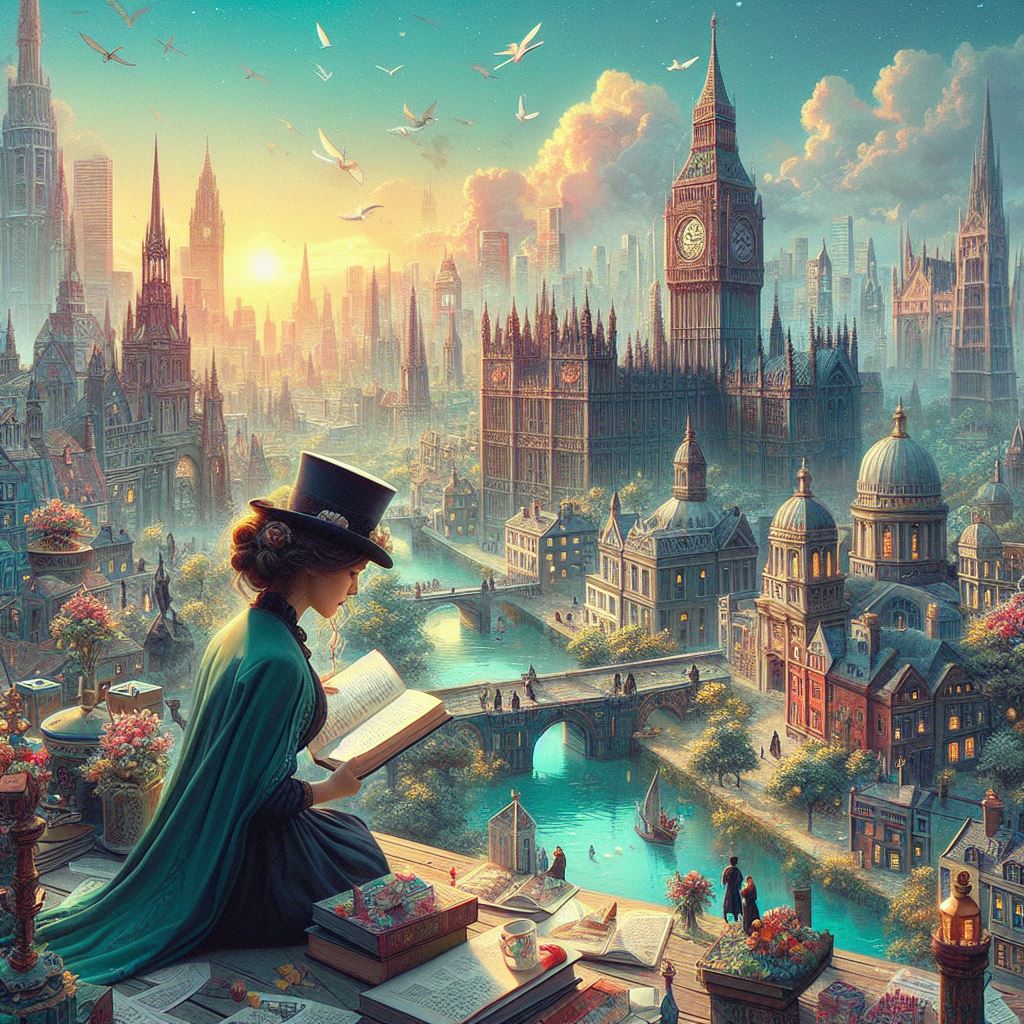Charles Dickens uses descriptive and satirical style in his books. He uses symbolic language to depict the monarchy in general. For example “King with a large jaw” and “queen with a plain face”. In addition, Dickens often uses satire and caricature to highlight societal issues. At the same time, the writer creates a picture in the minds of his readers and to fulfill the requirements of his plot.
For example, the writer uses the word “pincers” in the first chapter of “A tale of two cities”. It emphasizes the severity and cruelty of the sentence. Readers recall the time of the French Revolution when authorities treated people badly. They did horrifying things to a young person like taking away their tongue and cutting off their hands. Tragically, some people were even burnt. Such brutalities are hard to imagine. But, the writer makes graphical imagery that evokes emotions.
All of Charles Dickens’ books are interesting in their own way. In this article, we will reveal some facts that add a layer of fascination to his legacy:
1. Serialized storytelling in Charles Dickens books
In Charles Dickens books we find serialized storytelling. He was master of publishing stories in sequential installments. Therefore, I recommend reading Charles Dickens books for the students who are learning to write episodes of TV series.
In addition, the writer better knows the technique of engaging readers for a long time. He keeps the interest alive of his readers. However, instead of publishing the complete novel at once, he used to publish a few chapters at a time. For example, readers eagerly awaited for the next installments of “The Pickwick Papers” and “A Tale of Two Cities”. Both of these novels created a sense of anticipation.
2. Vivid characters name
We find a layer of humor, irony and symbolism in the character names of Charles Dickens books. This technique makes his characters unforgettable for readers. However, it is one of the elements that gained his character’s popularity. In addition, the names reflect the personalities and characteristics of his characters. For example:
- Ebenezer Scrooge (A Christmas Carol): The name defines the behavior of the character. It highlights the misery and stinginess of the character. Charles Dickens wants to emphasize the cold heartedness and selfishness of the character.
- Uriah Heep (David Copperfield): The character Uriah Heep in “David Copperfield” is a sycophantic and deceitful character. The name “Heep” implies a heap or pile, suggesting an accumulation of false humility and insincerity. Uriah’s name serves as a metaphor for his manipulative nature, making it a vivid and fitting choice.
- Wackford Squeers (Nicholas Nickleby): In “Nicholas Nickleby,” Wackford Squeers is the cruel headmaster of Dotheboys Hall. The name “Squeers” sounds like “squeezing” or taking advantage, emphasizing the character’s exploitative and abusive nature. Dickens uses such names to create an immediate impression of the character’s personality.
3. Christmas tradition
A Christmas Carol” is a special Christmas story that lots of people love. It makes Charles Dickens a favorite during the holidays.
Why do people like it?
Feels like christmas: The story is all about the good feelings of Christmas—being kind, sharing, and making up for mistakes.
Christmas things: It talks about fun Christmas things like giving gifts, eating yummy food, and being with family. These are things people like to do during Christmas.
Movies and shows: Many TV shows and movies have used the story. People watch these during Christmas, making it a big part of how we celebrate.
So, because of this story, Charles Dickens is like a Christmas friend for everyone
4. Social reform advocacy
Charles Dickens wasn’t just a storyteller; he cared a lot about making the world better. He wrote stories that showed how hard life was for poor people and talked about problems in society. Let’s look at social reform advocacy in Charles Dickens books.
“Oliver Twist”: This story talks about how orphans like Oliver had tough lives in workhouses. It made people think about how kids were treated and sparked discussions about stopping child labor.
“Hard Times”: Dickens wrote about how the big factories during the Industrial Revolution made life tough for workers. He didn’t like the idea that people were treated like machines. He wanted everyone to be more caring and understanding.
“Bleak House”: This story criticizes the slow and confusing legal system. Dickens used a made-up court case to show how unfair it was. He wanted the legal system to be fairer and work faster.
“A Christmas Carol”: Even though it’s a happy Christmas story, Dickens also talks about poor people’s struggles. Scrooge’s change from being mean to kind reminds us to be generous and care about others, especially during the holidays.
“David Copperfield”: Dickens tells us about problems like child labor and how hard life was for the working class. Through David Copperfield’s story, he wanted people to understand the challenges others faced in trying to make their lives better.
In all these stories, Dickens wasn’t just trying to entertain. He wanted to make people think about how to make the world a better place. That’s why readers like him—he used his stories to talk about important issues and help others.
5. Innovative writing techniques
Vivid character descriptions: Dickens was great at describing characters in a way that made them easy to imagine. For example, he’d say someone had a “large jaw” or a “plain face,” making the characters stand out in our minds.
Intricate plots: Dickens was like a master puzzle maker. He liked to weave complex stories with lots of twists and turns. In “A Tale of Two Cities,” he created a plot that connected characters in London and Paris during the French Revolution.
Social commentary: Dickens wasn’t just telling stories; he was also talking about how society worked. In “Oliver Twist,” he showed how poor orphans were treated badly, making people think about how to make things better for everyone.
So, Dickens was like a creative wizard, using these tricks to make his stories exciting, characters memorable, and also teach us something about the world.
6. Unfinished Dickens’ final novel
Unfortunately, Charles Dickens did not finish his last novel. It left a sense of curiosity among readers. However, the ending of his last novel, “The Mystery of Edwin Drood” remains a mystery.
Furthermore, it was creating excitement among readers when it stopped. A story without a proper ending gives readers their own thought process. They enjoy their adventures. Similar situation happened with the last Charles Dickens book, “The Mystery of Edwin Drood”. It’s like having a puzzle, but the last piece is missing.
7. Invention of words in the Charles Dickens books
Charles Dickens entertains his readers with his ability to invent new words. However, those words gained popularity and became part of our routine life. Such as:
Boredom: When you feel really not interested in something, we say you’re bored. Dickens made this word popular!
Flummox: If something confuses you a lot, you might say it flummoxes you. Dickens came up with this fun word.
The Creeps: When something gives you a weird, scary feeling, like a spooky story, we say it gives us the creeps. Dickens helped make this phrase common.
So, Dickens was not only good at telling stories but also at creating words that we still use today!
8. Elements of theater in Charles Dickens books
Dramatic Scenes: Dickens wrote his stories in a way that feels like watching a play. For example, in “Oliver Twist,” when Oliver asks for more food, it’s a dramatic moment like in a play.
Colorful Characters: Just like actors in a play, Dickens created characters with big personalities and interesting traits. Think of Scrooge in “A Christmas Carol” or Fagin in “Oliver Twist.”
Dialogue and Speech: Dickens used conversations between characters, like lines in a play. In “David Copperfield,” the talks between David and his friends feel like you’re listening to a play.
So, Dickens didn’t just write stories; he made them feel alive, like you’re watching a play unfold in your imagination.
9. Traveling elements in Charles Dickens books
Journeys and adventures: In Dickens’ books, characters often go on exciting trips and adventures. In “David Copperfield,” David goes on a journey to find a better life, meeting interesting people along the way.
Change of settings: Dickens describes different places in his stories, making you feel like you’re traveling with the characters. In “A Tale of Two Cities,” the story moves between London and Paris during the French Revolution.
Travel descriptions: Dickens is like a tour guide in his books, telling you about the places characters visit. In “Great Expectations,” Pip travels to the spooky Satis House, creating a mysterious atmosphere.
So, when you read Dickens, it’s like taking a journey to different places and experiencing exciting adventures with the characters.
10. Fictional world building in the Charles Dickens books
Dickens was like an architect who built entire worlds in his books. In “Bleak House,” he created a detailed and imaginative London with its own neighborhoods and characters. Dickens’ ability to build rich and vivid fictional worlds adds a magical touch to his storytelling.
Last words
It is about learning new things while reading Charles Dickens Books. At the same time, the writer enlightens you about the past. Take one of his novels and start reading, take help from the internet where you find difficulty in understanding. However, the writer creates interest in his readers with his next chapter.








